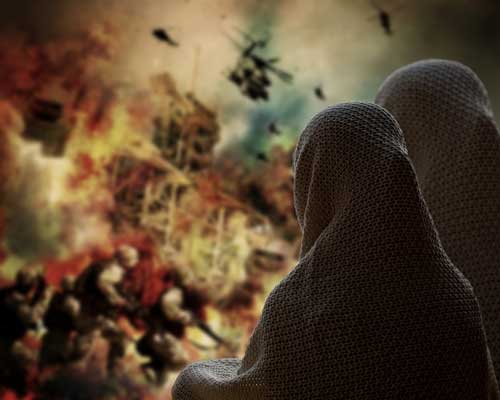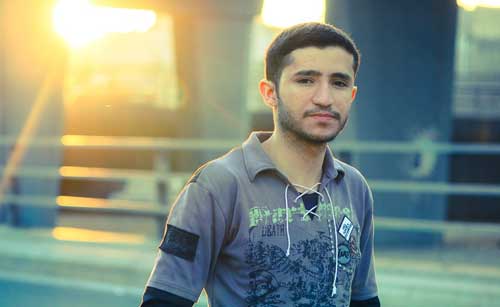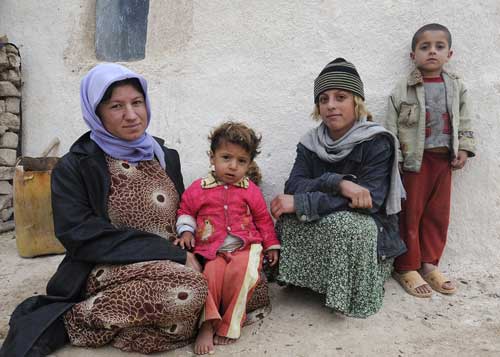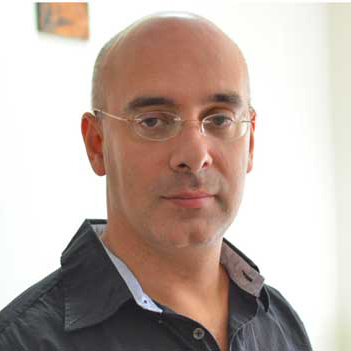Mission in a World Gone Wild and Violent: Challenging the Monochromatic View of Islam from a Silent Majority Position
Posted 06/17/2016 in Missiology Conversations, Reflections on Islam
This blog is part of an ongoing series by the speakers for Fuller’s 2016 Missiology Lectures: “Dynamics of Contemporary Muslim Societies: Christian Theological and Missiological Implications.”
On May 16, 2016, the day that I am writing this blog, we are commemorating the secret deal between Britain and France known today as the ‘Sykes-Picot agreement.’ Following secret negotiations in 1916, Britain and France agreed on the new borders of the Middle East as they predicted the fall of the Ottoman Empire at the end of WWI (1914-1918). A third minor party to the agreement was the Tsarist government of Russia. But following the Bolshevik Revolution and the end of the Tsarist era, Russia would fall out of the agreement, and the Bolsheviks would make the agreement public on November 23, 1917, provoking what one scholar has described as ‘embarrassment’ to the British, ‘dismay’ to the Arabs, and ‘delight’ to the Turks (pun intended!)[1]

In the summer of 2014, the group calling itself the Islamic State in Iraq and Syria (ISIS – or in Iraq and the Levant, ISIL) went on a rampage, conquering and massacring Christians, Yazidis, Shiites, and any Sunnis who disagreed with its program. Beginning at the border regions of Iraq and Syria, ISIS gradually pushed deeper into each country, occupying what today represents about a third of Syria and a quarter of Iraq. Strikingly, they started off with the supremely symbolic act of tearing down the international border demarcation between Iraq and Syria, which had resulted from the Sykes-Picot agreement of 1916. The challenge to the post-colonial order imposed by western nations on the Middle East region had been launched.
Meanwhile, over twenty years ago, in 1992, in a seminal lecture at the American Enterprise Institute, political scientist Samuel Huntington proposed the notion of a ‘clash of civilizations’ as a key to understanding the nature of global conflict in a post-Cold War era. After he published a book with the same title in 1996, it became popular to think of Islam as the single most significant divisive agent in today’s world. In much of the popular mind, the world is now divided between the Muslims and ‘the rest.’ Christians of the East are an oppressed ‘minority’ that needs rescuing by the rest in ‘the West.’ And Muslims are largely on a grand mission to conquer the world.

Now nearly two years later, has ISIS’ behavior confirmed Huntington’s vision of the world or challenged it? How do we understand militant jihadism within the grander scheme of the Islamist and Salafist ideologies of the twentieth century? What does a twenty-first-century perspective onthe Middle East and global developments tell us? I would argue that twentieth-century post-colonial realities represented jihadi salafism’s raison d’être and attractiveness in the last century as well as at the turn of the twenty first. The biggest draw of ISIS on young people is its rebellious stance towards the dominant order imposed by world powers. For the disillusioned young people living under post-colonial, paternalistic, corrupt, yet largely western-supported regimes in the Arab and Muslim world, affiliating with a movement that dares to challenge the dominant order under the victorious black banners of ISIS is an extremely defiant and invigorating act.
Meanwhile, French Sociologist Olivier Roy reveals through comprehensive research into ISIS’ recruitment draw in Europe[2] that the thrill of affiliation to ISIS is more to do with the disaffection of young Europeans who are part of second- or third-generation migrant communities living in ghettoized societies, as well as young Millennial and iGeneration converts attracted to the service of revolutionary hordes with no apparent moral boundaries, than anything to do with commitment and loyalty to Islamic theology. As Roy puts it, ISIS recruits have a fascination for the narrative of ‘a small brotherhood of super-heroes who avenge the Muslim Ummah’ (10).
Rather than a confirmation of the Huntington thesis, I would argue that ISIS’ very existence forecasts new, deep, and comprehensive developments even within Islam in the near and longer-term future.

In my missiology lecture on November 4, 2016, I intend to challenge popular notions that draw brash generalizations about Islam. I will argue that the world is mostly populated with ordinary people who simply want to live their lives and provide a decent future for their children. This category of Christians, Muslims, Jews, Hindus, Buddhists, Baha’is, Yazidis, and holders of no particular faith, effectively represent the ‘silent majority’ which the ‘Clash’ theory tends to brush off as of no significance to world tensions and conflicts. Yet the recent uprisings in the Arab World seem to have inaugurated a new role for this grassroots group, to a large extent as a result of globalization and the rise of social media.
Searching for the Islamic roots of ISIS in the Qur’an and Islamic traditions may yield some interesting results for scholars of world religions. And their work may be useful in the long run, as scholars of different faiths engage in conversation about theology and its impact on politics. But the more important question from the perspective of the sociology of religions is the reverse: how are current events and manifestations of contemporary Islam, together with the reactions to it among adherents of other religions, particularly Christianity and Judaism, going to affect Islam and other religions in the longer run? Scholars who study the phenomenon of religion are more interested in defining religion based on the behavior of its adherents than on the basis of some grand theological themes that are supposed to be the driving force of people of faith.

The ‘world religions’ approach has a tendency to view people of faith as prisoners of theological systems, whose every move can be predicted by their communities’ sacred scriptures. Whereas the ‘sociology of religions’ approach offers a dynamic vision of mutually-influential forces between theology and the practice of religion. I would argue that the latter vision offers us a far richer field of inquiry, engagement, and action than the former. From a missional perspective, therefore, it is far more useful, far more empowering and energizing; it invites us to new possibilities in terms of creative and constructive action required for the mission of God.
What does mission look like when the Church globally ceases from aligning with monochromatic political visions of the world? How do we take the focus away from stereotyping driven by fear, and back to God’s hopeful mission to individual human beings in all their diversity? Can the global Church reclaim a missional vision that adopts the perspective of the ‘silent majority’? What initiatives are needed to transform families, communities, nations, and the world through this ‘silent majority’? Is Jesus still of any significance when a more ‘existential,’ ‘low-boundaries’ approach to religions is taken? What does a Kerygmatic, ‘supra-religious’ approach to mission have to offer our contemporary missiological thinking? The latter two concepts – Kerygmatic and ‘supra-religious’ – are the two angles which I intend to use, in November, to develop a new framework for a missiological vision in the twenty-first century.

Martin Accad is the director of the Institute of Middle East Studies at the Arab Baptist Theological Seminary in Beirut, Lebanon, having also served as Academic Dean of ABTS for 5 years. He is additionally the Senior Associate of the Middle East Program for the Centre on Religion and Global Affairs. From 2007-2013 he was a faculty member at Fuller Theological Seminary in the area of Islamic Studies, where he continues to teach as an affiliate professor.
Join Martin Accad and other cutting-edge scholars November 3-4 at our 2016 Missiology Lectures: Dynamics of Contemporary Muslim Societies: Christian Theological and Missiological Implications.

